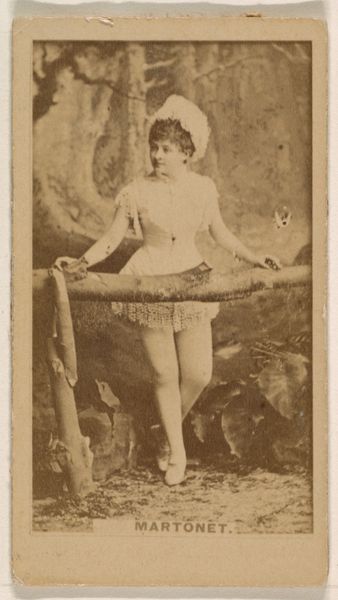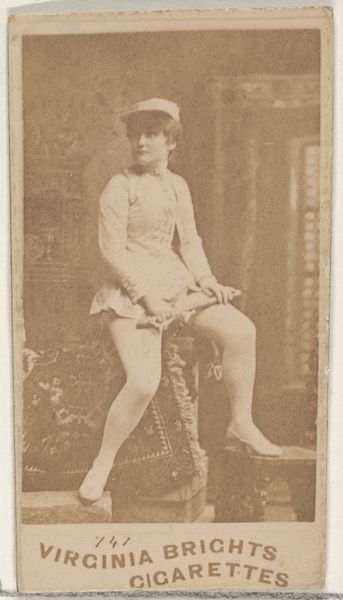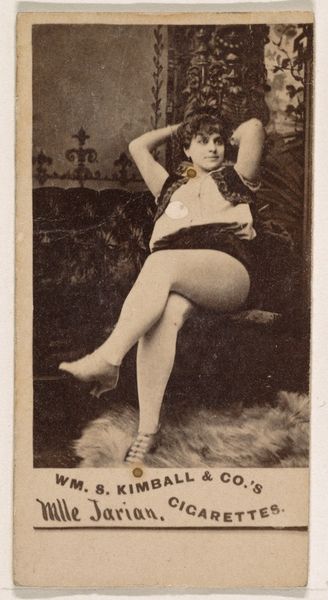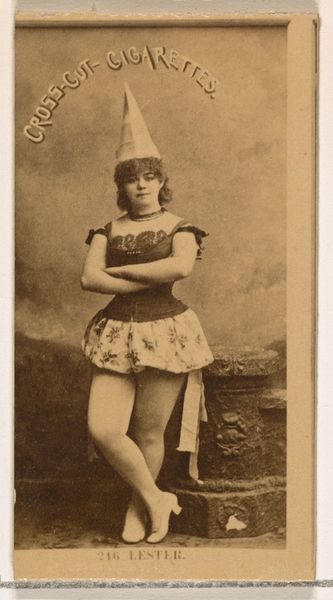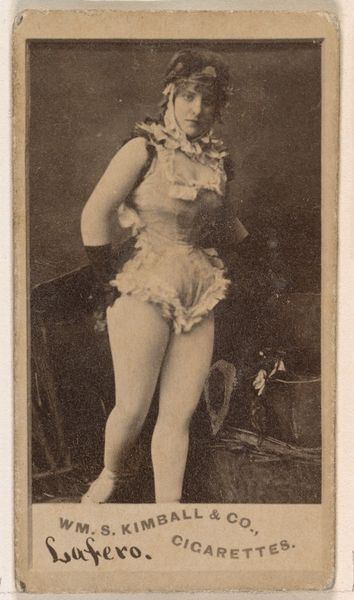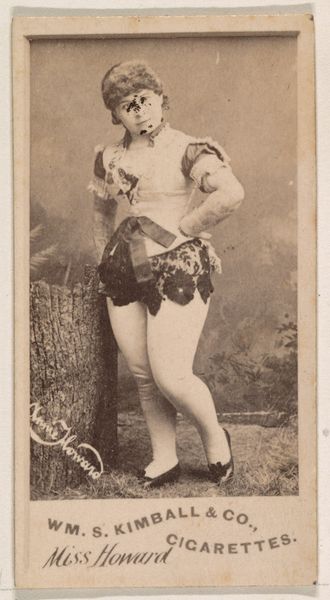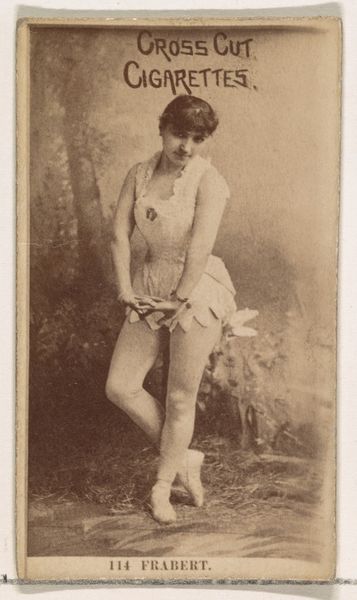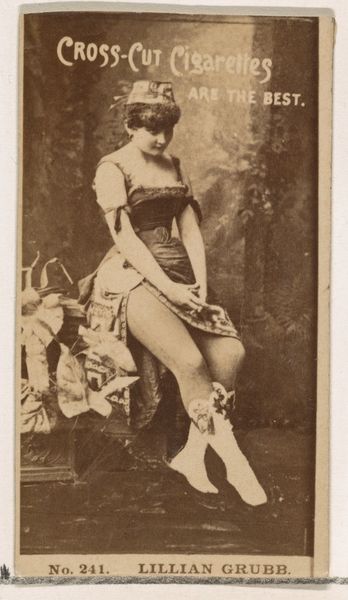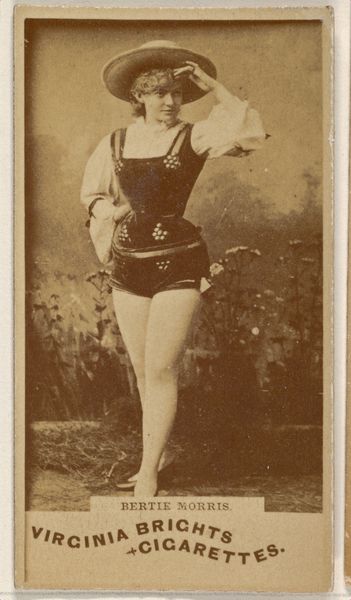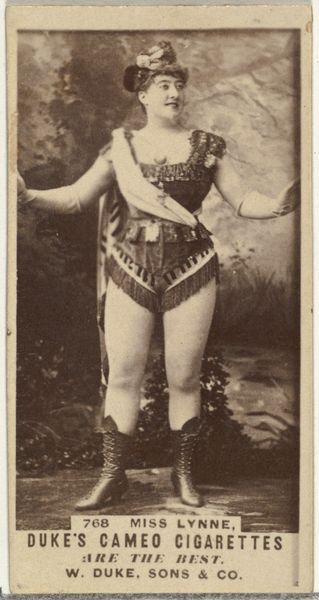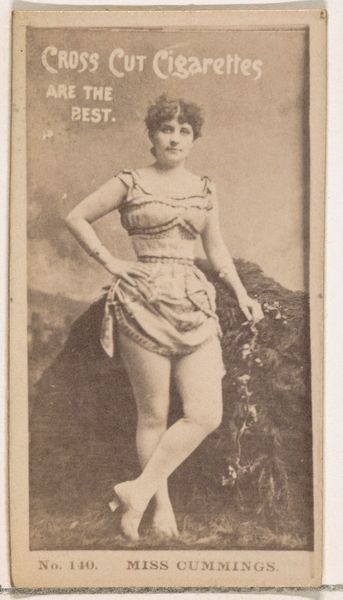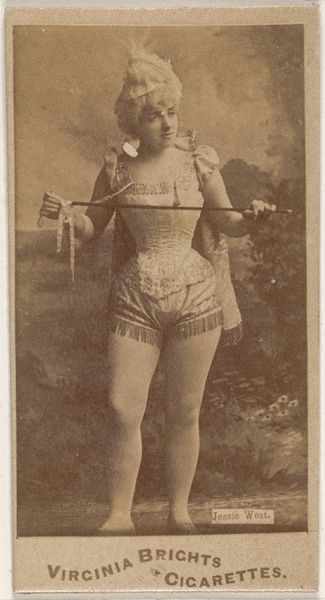
Eugenie Raul, from the Actresses series (N245) issued by Kinney Brothers to promote Sweet Caporal Cigarettes 1890
0:00
0:00
print, photography
#
portrait
# print
#
photography
#
19th century
#
men
#
erotic-art
Dimensions: Sheet: 2 1/2 × 1 7/16 in. (6.4 × 3.7 cm)
Copyright: Public Domain
Editor: This is a photographic print from 1890 featuring Eugenie Raul, an actress of the time. It was produced by Kinney Brothers Tobacco Company as part of their "Actresses" series to promote Sweet Caporal Cigarettes. What strikes me most is how the image functions as both a portrait and an advertisement, walking the line between art and commerce. How do you interpret the role of this image in its historical context? Curator: That's a very astute observation. Images like these circulated widely, blurring the boundaries between entertainment, advertising, and even art. We have to consider the social and political role of actresses, whose public image was carefully constructed and often sexualized. The cards themselves functioned within a specific economy of desire and consumerism, fostering connections between the product, the performer, and the audience. Do you think that impacts its status as art? Editor: Definitely. Knowing it was created to sell cigarettes impacts my understanding. It feels less like a celebration of an individual and more like a carefully crafted marketing strategy, part of a larger system exploiting female imagery for profit. I wonder how much agency Eugenie Raul had over this depiction. Curator: Precisely. Consider the institutions at play here: the tobacco company, the theater, and the burgeoning mass media. They all contributed to shaping not only Raul's image, but also the public's perception of women and performance. These seemingly innocuous cards reveal a complex web of power relations and cultural anxieties. How does that affect your view of the work aesthetically? Editor: It complicates it. The photograph itself has a certain beauty and elegance, but the commercial context casts a shadow. I think it’s a potent reminder of how art, or images resembling art, can be embedded within systems of economic exploitation and social control. Curator: I agree entirely. And considering that dynamic adds a significant layer to our appreciation of this small, yet impactful, piece of social history. These promotional images provide crucial insight into the societal attitudes towards actresses in the late 19th century.
Comments
No comments
Be the first to comment and join the conversation on the ultimate creative platform.
